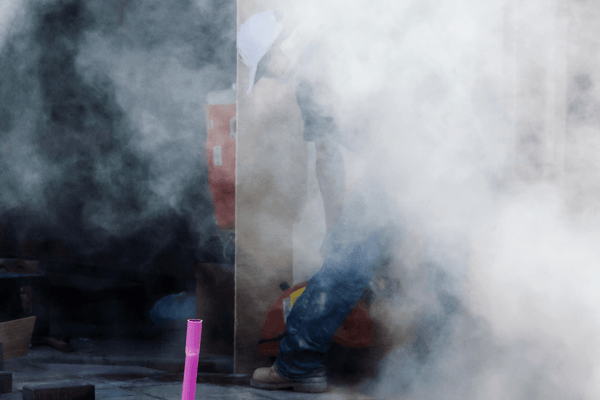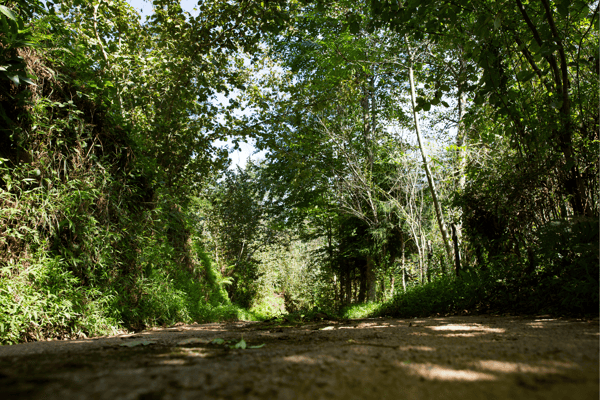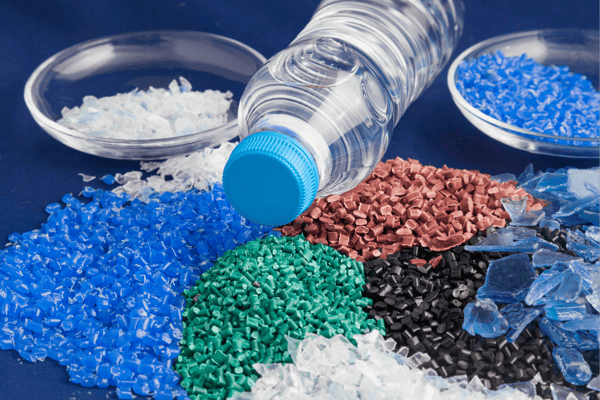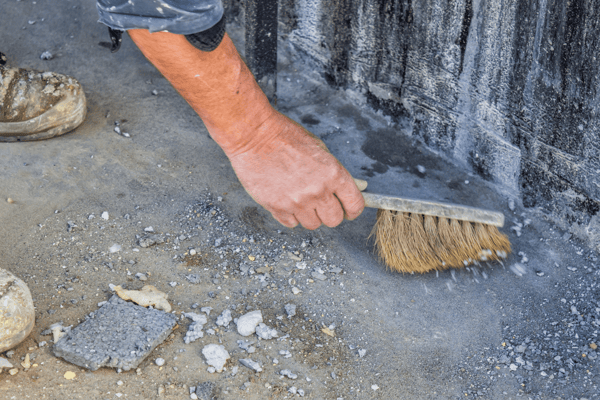Commercial flooring contractors working on domestic and commercial sites will be familiar with the problem of how to contain dust at construction sites. Dust is a problem. There’s no doubt about that.
More than 2 million construction workers are exposed to construction dust in more than 600,000 workplaces in the US. But there are ways of keeping the mess low so that you can provide a better-finished project for your clients.
That said, let’s take a look at how best to contain dust at construction sites.
But first:

What’s Construction Dust?
We’re talking about those tiny and dry solid particles released when you’re grinding, cutting, drilling, and polishing materials such as concrete and bricks.
It can also be present when you’re working outdoors in windy conditions. Sometimes, it is referred to as Silica dust.
In 2016, the US Occupational Safety and Health Administration (OSHA) tightened the rules on how much construction dust or silica workers can be exposed to when working on construction sites.
Why? Because such small particles can pass through your throat and nose and get into your lungs.
Regular inhalation of construction dust can lead to severe lung diseases such as coal pneumoconiosis, silicosis, and hypersensitivity pneumonia.
Keep Construction Dust Under Control
We’ve found that the best way to keep construction dust under control is to have an effective method in place, rather than reactively tackling the problem.
This means in the first instance, you have to try to reduce the amount of dust your construction project produces in the first place.
Here’s what we advise our clients so that they can contain harmful dust at their worksites and keep it to a minimum:

Make a Plan
This includes identifying where the dust is likely to come from. It’s also worth checking out what type of resources your employer has for dust containment.
Before you start work, you must prepare your work area to contain dust at your construction sites. Here are a few essential tips before you start work that’ll save you time and discomfort later on:
- Cover any bare soil, mulch areas, or grassy surfaces
- Spread some gravel or mulch to help limit fine dust particles
- Create some windbreaks or barriers to protect yourself, your workmates, and your workspace
- Phase your site clearing so that you only clear areas you’re about to work on; that way, you avoid working in a dust bowl
Also, when it’s windy, try to limit doing any jobs that might generate further dust.

Use Dust Suppressants
Some construction sites use water to keep the dust at bay, but the downside of this is that you have to use it regularly, and using too much can create erosion and runoff.
However, it’s also possible to use machinery such as the Malish Dust Skirt. This helps you to create a clean, dust-free environment.
It means you can breathe more easily when you’re grinding, sanding, and buffing during high-intensity flooring projects.
The Malish Dust Skirt keeps dust particles and other contaminants at bay and filters them. Choose from the 17” or 20” model, depending on your floor size.
As for interiors, it’s also worth finding out a bit more about floor cleaning machines, especially durable ones. That way, you don’t waste your money on equipment that lets you down further down the line.
We’re big fans of the concrete vacuum, which in our opinion, is the best way to remove dust at construction sites, especially when grinding regularly takes place.

Slow it Down and be Green-Friendly
If you’re using vehicles on-site, reduce their speed. It stands to reason that fast-moving trucks generate more dust than ones moving at a gentler pace.
You could also consider looking after existing vegetation on your site and maybe plant new vegetation.
Both these will help you to reduce the amount of soil that’s exposed to wind. By establishing plants and/or trees, you could be helping to reduce dust pollution.
Several particular trees are effective in this way, including the Norway Maple and Silver Birch.

Polymers
You may want to consider using polymers that bond individual construction dust particles together. When dry, polymers form a type of “crust” that will toughen the soil's surface.
Polymers are best suited for external areas that don’t get any vehicle traffic. You need to water the polymers to activate them.
If you’re thinking of using them indoors—for example, if you’ve been laying a dusty concrete floor—it’s worth having a look at our polymer range.
Lastly, when you’re working indoors, it’s always worth establishing that you have a healthy air quality when you’re working.
The air you’re breathing in doesn’t hurt your health, either. You can read more about healthy air quality and establish if you have poor air quality in our blog post on the topic.
Once you’ve outlined your plan, it’s also worth allowing some time to remove any tough stains on your commercial project that still linger after you’ve completed your dust containment work.
We have a great selection of products suitable for hard flooring care that will suit your needs.

The Old-School Way
They’re ideal for smaller surface areas and also for use on pavements and highways. We’re talking about brushes and pans to clear dust as you work, such as hand-held dustpans or brooms.
Are You Ready to Contain Dust at Construction Sites?
Floorcare.com is your premier source for commercial floor care facility cleaning and restoration equipment and supplies, including equipment to help you contain dust at construction sites.
No matter what type of floor maintenance and restoration machines your company or organization is looking for, you'll find them here at Floorcare.
Now you have a better idea of containing dust at construction sites, leave a comment in the box below with your recommendations.
Or, if you want to talk to us about any of our products and services, contact us today for a no-obligation chat.
Your blog post content here…







1 Comment